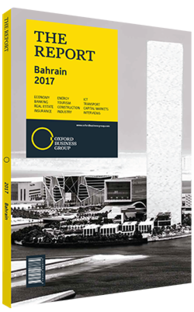Efforts and progress in meeting demand for housing in Bahrain
Thousands of Bahraini citizens are set to move into new properties in 2017 as the government makes good on its pledge to provide 25,000 new homes by the end of 2018. The houses and flats have been funded through the Ministry of Housing (MoH), the Gulf Development Fund and through public-private partnership (PPPs) agreements. The homes are built to an agreed specification and then handed to the MoH, which allocates them to citizens on its waiting list. Developers are also working with the government to build affordable housing.
The MoH, which was established in 1975, noted on its website that from 1999 to 2009, 13,500 units were distributed by the MoH at a cost of BD510m ($1.4bn), along with 16,600 housing loans worth BD400m ($1.1bn) and 4600 land plots at a value of BD200m ($530.5m). However, despite spending BD1.1bn ($2.9bn) on affordable and social housing during that period, by 2011 the international polling company Gallup was reporting that 46,000 people were on the government’s housing waiting lists, which had a backlog that meant that those receiving new homes had been on the list since 1993. Faced with growing demand, dilapidated housing stock and government spending cuts, the MoH turned for help to the private sector and GCC neighbours.
GULF-FUNDED HOMES: The Government Action Plan to build social and affordable homes is receiving financial backing from the Gulf Development Fund, in which wealthier Gulf nations pledged to spend $10bn over 10 years in Bahrain after the 2011 Arab Spring. Mona Almoayyed, managing director of diversified business group YK Almoayyed, told OBG, “Contracting has been better in 2016 than in the last two years due to the GCC fund. There are few private sector projects, and in general big companies benefit the most, but it is definitely helping everyone in some form.”
The Abu Dhabi Fund for Development also awarded Bahrain $101m in August 2016 to help it start building Al Madina Al Shamaliya, or Northern City. The first phase of the project will see man-made islands created, while in the second phase $680m will be spent to construct 2694 homes. Also in August 2016, the MoH formalised a deal under which Kuwait will spend $293m on building 1247 housing units in east Hidd, and a further 1645 homes and associated infrastructure in Hidd itself.
PPP FINANCING: Another way in which the construction of new homes for citizens is being funded in Bahrain is through PPPs. The MoH has entered into PPP agreements with two developers: Kuwait Finance House (KFH), one of the partners at Diyar Al Muharraq; and Naseej, which has already handed over the first phase of a 2817 social and affordable housing scheme at Al Madinah Al Shamaliya and Al Lawzi. In September 2016 the first 133 houses were completed at the 1.2m-sq-metre Deerat Al Oyoun site, where 3100 properties will be built as part of the 12-sq-km Diyar Al Muharraq development. In the same month, a financial package that will pay for part of the scheme was agreed on between Diyar Al Muharraq and lenders including Al Salam Bank Bahrain, KFH, the Bank of Bahrain and Kuwait, and Al Baraka Islamic Bank. The lenders have agreed to put up $366m of the $700m required.
GOVERNMENT-BACKED LOANS: Bahraini citizens wishing to buy affordable properties can take advantage of the MoH’s Mazaya social housing finance scheme. Purchasers can borrow BD120,000 ($318,000) over a period of 25 years. The homebuyer must pay instalments on the first BD81,000 ($215,000) of the loan at up to 25% of their monthly salary. Any additional proportion of these monthly instalments will be met by the government. The remaining BD39,000 ($103,000) is payable under a top-up real estate loan on the assumption that buyers will be able to afford higher instalments later in their careers. In August 2016 the government began handing over the keys to 3000 social housing units in the Hunainya development in East Sitra. In May 2016 the government also announced it had acquired land that would enable the construction of 3520 homes at Al Ramli and 746 properties in Sitra’s Block 609.
You have reached the limit of premium articles you can view for free.
Choose from the options below to purchase print or digital editions of our Reports. You can also purchase a website subscription giving you unlimited access to all of our Reports online for 12 months.
If you have already purchased this Report or have a website subscription, please login to continue.

